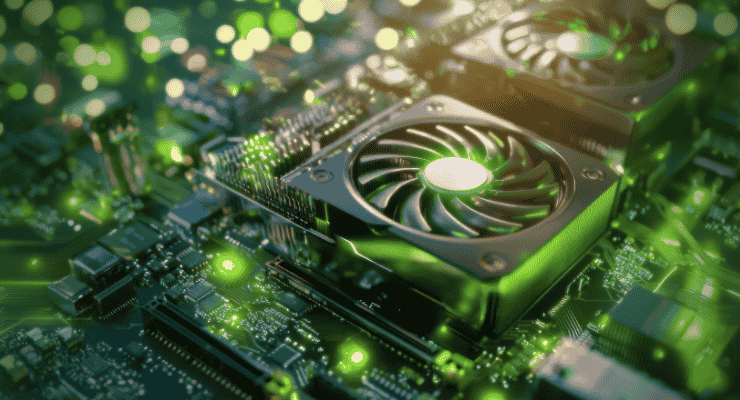AI GPU Growth Directly Impacts Carbon Emission Growth through 2030

The rapid rise of Artificial Intelligence (AI) is rushing in a new era of technological innovation, but at a significant environmental cost. Much of the attention is on the power consumption by these AI servers in data centers. However, the overall carbon profile of the silicon in these AI devices rises as AI applications become increasingly sophisticated. The demand for high-performance computing, particularly from powerful graphics processing units (GPUs), is skyrocketing. This surge in demand translates to a dramatic increase in the production of these chips and thus contributes to growing carbon emissions.
TechInsights’ Global AI GPU Carbon Emissions Forecast, 2025-2030 predicts a staggering 16-fold increase in CO2e emissions from the manufacture of GPU-based AI accelerators between 2024 and 2030. By 2030, these semiconductor emissions are projected to reach 19.2 million metric tons of carbon dioxide equivalents (MtCO2e), a stark contrast to the 1.21 million MtCO2e recorded in 2024 - representing a CAGR of 58.3%.
Factors Fueling the Carbon Impact of AI GPUs
Several factors contribute to this alarming trend:
- Massive Silicon Demand: AI accelerators are characterized by their immense size, often requiring multiple reticles of silicon to accommodate the vast number of processing cores and memory. This increased silicon demand directly translates to higher energy consumption and semiconductor emissions during the manufacturing process.
- Energy-Intensive Manufacturing: The fabrication of these large, complex chips involves energy-intensive processes such as lithography and etching, further contributing to the overall semiconductor carbon footprint.
- Advanced Packaging Complexity: While advanced packaging techniques like 3D stacking and chiplet integration offer performance enhancements, they also increase the complexity and energy consumption of the assembly and test phase of production.
The Role of HBM and Other Factors
The integration of High Bandwidth Memory (HBM) is crucial for the performance of AI accelerators. However, the increasing number of HBM stacks and dies required to support these powerful GPUs significantly contributes to the overall semiconductor emissions.
It's important to note that this forecast represents a conservative estimate. Factors such as the transition to smaller process nodes (e.g., 2nm), while potentially reducing emissions per transistor, also introduce new manufacturing challenges and may not significantly offset the impact of increased die size.
Mitigating the Environmental Impact
While the challenges are significant, there are potential avenues for mitigating the environmental impact of AI accelerator production. These include:
- Renewable Energy Adoption: Shifting to renewable energy sources for manufacturing facilities can significantly reduce Scope 2 semiconductor emissions.
- Process Optimization: Continuous improvement in manufacturing processes, such as optimizing lithography techniques and reducing chemical usage, can minimize energy consumption and waste.
- Advanced Packaging Innovations: Further advancements in packaging technologies, such as more efficient interconnects and reduced material usage, can help to minimize the environmental footprint.
- Data Center Efficiency: Optimizing data center infrastructure, including improved cooling systems and renewable energy alternatives, is crucial for reducing the overall energy consumption associated with AI workloads.
Conclusion
The rise of AI presents both unprecedented opportunities yet significant environmental challenges. Addressing the growing semiconductor carbon footprint of AI accelerators will require a multi-faceted approach that involves collaboration across the supply chain, industry, academia, and policymakers. By investing in sustainable technologies, optimizing manufacturing processes, and promoting responsible AI development, we can ensure that the benefits of AI are realized while limiting environmental impact. Read TechInsights’ full Global AI GPU Carbon Emissions Forecast, 2025-2030 for details, data, and analysis.









